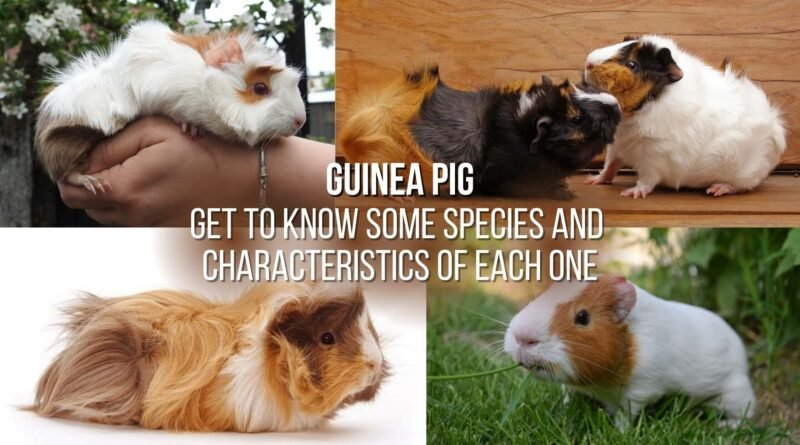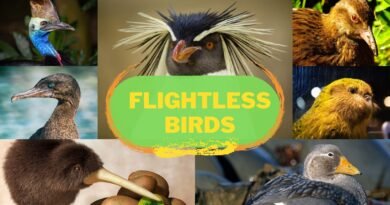Pet guinea pig – Get to know some species and characteristics of each one
Do you know this shy and docile pet? Have you ever thought about having a pet guinea pig to keep you company? They are affectionate, and a little scared, but very social and love to receive affection. Let’s learn more about this small rodent, its diverse varieties, characteristics, and care. Enjoy the reading!
Origin of guinea pig (Cavia porcellus)
The guinea pig originates from South America, in the Andes region, most probably in the south of Peru and Colombia and today it is possible to find it around the world. This little animal was domesticated thousands of years ago, initially by native Andean populations, and was intended to serve both as food and as a pet. They are considered wild animals, however, currently, they no longer exist in nature, only in breeding grounds.
Despite the popular name, this little animal does not come from Guinea and much less is a pig. They are rodents of the Caviidae family. So why do we call them that? One of the explanations says that the ‘pig’ is due to the sounds they make: grunts similar to those of piglets. On the other hand, ‘guinea’ is because in England in the 16th century, they could be bought for a guinea (old English coin).
Characteristics
These cute little animals have a round body, no tail, measure around 10 inches in length and their maximum weight reaches 2.5 pounds. Its coat varies widely according to breed. Did you know that there are different guinea pig breeds? Let’s talk about some of them, however, something is natural to all: their teeth never stop growing. That’s right, throughout their lives, their teeth continue to grow and just for this reason, it is so important that they have food that they can chew and thus wear out.
These rodents are related to the friendly capybara and like it, they are also friendly and social, despite being quite scared. This characteristic of being afraid is because, in nature, they are prey and that is why they are so suspicious. However, they are friendly, affectionate, and social. They live in groups, called a herd, of an average of 10 individuals. When they are pets, they live well being independent. Nevertheless, if you want them to be happy while you’re away, consider adopting more than one, at least a pair, as they need interaction.
Unlike most rodents, the guinea pig has daytime habits and this is another advantage if it is your pet friend. Rather than sleeping for long hours, they prefer to take several naps during the day. Their lifespan is 5 to 8 years and for them to live their lives healthy and happy, later in this article we will talk about some care that tutors need to have with their pets.
Guinea pig breeds
Few people know, but there are several guinea pig breeds. Most are distinguished by the coat and here we will talk about 5 of these breeds and their characteristics. Are you ready?

Ridgeback guinea pig
This guinea variety is a very popular pet, and its coat is unique: on the back, it has some raised hairs that look like a mohawk hairstyle. Its colors range from black, brown, and white.

English Crested guinea pig
This is easy to guess the reason for the name: it looks like it has a small crest, also called a crown, on its forehead. Look how cute it is! Its coat is usually in yellow tones and the “crown”, with larger fur, is almost always in a different tone from the rest of the body.

Peruvian guinea pig
Do you want a long-haired friend? You will be enchanted by this one. Its hair is long and can measure around 20 inches. The colors of their hair vary between black, white, gray, and caramel. You’ll need to brush it and maybe even trim it, that is, it requires a little more expensive maintenance than short-haired ones, but it’s worth it, don’t you think?

Teddy guinea pig
Did you know that in 1902, former American President Theodore Roosevelt refused to kill a defenseless bear? Since then, the “teddy bear” went down in American history? And the Teddy guinea pig has that name just because it looks like a teddy bear, in addition to the fact that its short and thick hair, however, is soft to the touch like a stuffed animal.

Abyssinian guinea pig
This is one of the most popular pet guinea pigs due to its “messy” appearance. Have you noticed the hair that seems to be disheveled, as if they just woke up from a good night’s sleep? That’s natural! The Long-haired guinea pigs have hair swirls, called rosettes, which means that it does not grow in line with the body, but in small tufts or strands. It is exactly this detail that gives the Abyssinian this so cute looking.

American guinea pig
This pet guinea pig variety is one of the most popular of all. Their short and soft coat is usually available in white, black, and caramel colors. Like all other species, they are affectionate, playful, and love to interact.
These were some of the guinea pig species or varieties, but there are others. As we have seen, what changes from one species to another is their appearance. Their behavior is the same: social, happy, they like to take naps, they need to play and interact, they are affectionate, shy, and scared and all of them are cute.
Do you know what else is pretty much common for all? The care. Let’s talk a little bit about that.
Guinea pig care
We love our pets, right? And we don’t want to neglect their care, which can sometimes happen due to a lack of information. But what do we need to know about these cuties so that they are happy and healthy by our side? Let’s take a look.

Food
They’re herbivores, so no sharing your steak with them, okay? Eggs, milk, and byproducts should also be off the menu! There are specific feeds for guinea pigs, but natural food is always a great idea. Fruits, greens, and vegetables are allowed, and most importantly: hay. The hay must be available to them 24 hours a day and always fresh! Never neglect it. Do you remember that we said above that their teeth never stop growing? So, it gnaws the hay whenever it wants. This helps in maintaining teeth growth, in addition to avoiding teething problems. Prefer grass hay, as it has more calcium, and don’t forget the water bottle that should always have clean, fresh water.
Another detail: just like us, humans, the guinea pigs also do not produce vitamin C and need to ingest it through feed or food. Stay tuned, as a lack of vitamin C can cause serious illness in your little friend.
Environment
None of us would like to live confined in a tiny, uncomfortable, or dirty place, right? Neither do they. So be careful when purchasing cages that are too small or stuffy, as they are very susceptible to temperature changes. The ideal is cages or pens at least one foot wide for a small animal or larger if you choose to have more than one guinea.
Remember that they need to exercise, so in addition to a large pen, place ramps and platforms at low and varied heights so that they have fun. Another important detail in their little house is the bedding which must be natural, in addition to the solid floor and without holes. There are specific products to make the bedding, but straw or hay will do. It is necessary to change this bedding constantly to keep hygiene.
Health
Veterinarian monitoring is always important for any pet we have, do you agree? And in this case, the best thing would be with a veterinarian specializing in exotic and wild animals, but if you can’t find one in your city, it’s not required, just take it to a veterinarian you trust.
The pet guinea pig is considered a low-maintenance animal because it does not need vaccines or deworming. However, your little friend’s health will depend a lot on the care you give it personally: affection, adequate food, area for exercise, and daily monitoring of its behavior.
Conclusion
Here we know some types of pet guinea pigs, some care, and characteristics. Did you feel like having one of these cuties to keep you company? Or do you already have one? Leave your comment in the field below and tell us!
Till next time! ♥




